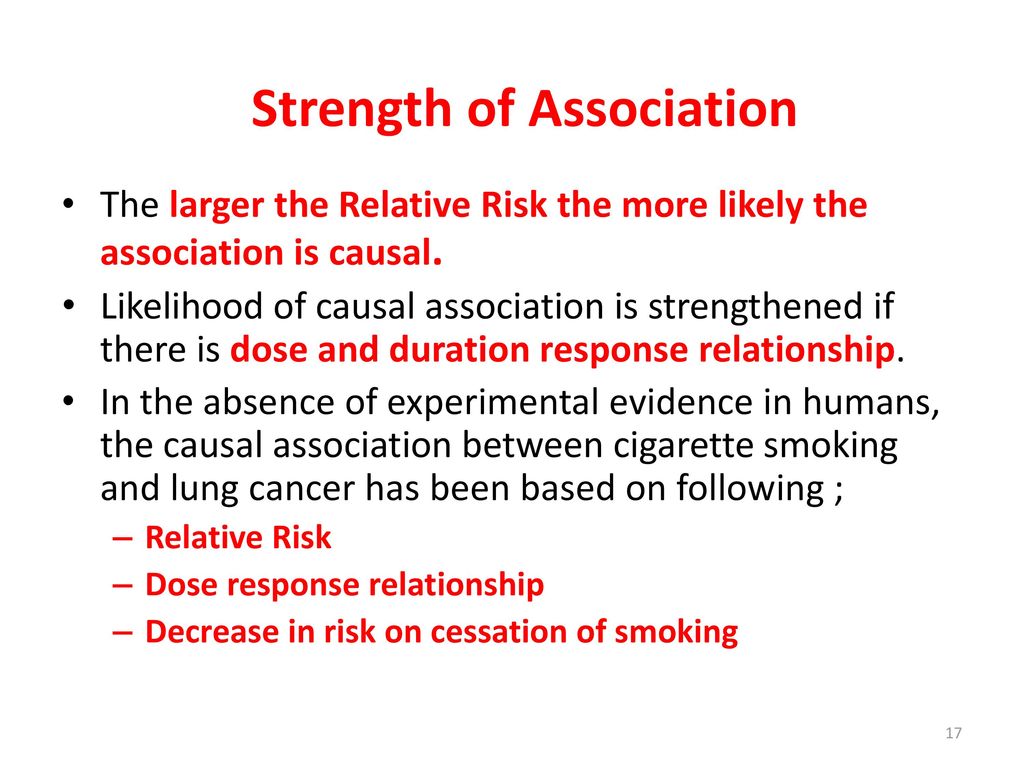Strength of Association and Dose-Dependent relationship
A #FOAMed post written by #ChatGPT
https://www.researchgate.net/figure/Correlation-strength-of-association-with-positive-negative-slope_fig5_280050998
In epidemiology, the strength of association is a measure of the relationship between an exposure (such as a risk factor or an intervention) and an outcome (such as a disease or a condition). A strong association between an exposure and an outcome means that the exposure is likely to be a significant contributing factor to the outcome. A weak association means that the exposure is less likely to be a significant contributing factor to the outcome.
https://www.researchgate.net/figure/Rule-of-Thumb-on-Strength-of-Association_tbl1_350767654
The strength of association can be measured using various statistical techniques, such as the relative risk (RR), the odds ratio (OR), or the risk ratio. https://sph.unc.edu/wp-content/uploads/sites/112/2015/07/nciph_ERIC3.pdf

Relative Risk (RR) Versus Odds Ratio (OR).
https://www.mdedge.com/familymedicine/article/65515/relative-risks-and-odds-ratios-whats-difference
- RR: Relative risk is a ratio of probabilities. It compares the incidence or risk of an event among those with a specific exposure with those who were not exposed. Get from a prospective cohort study.
- OR: An odds ratio is a ratio of ratios. It compares the presence to absence of an exposure given that we already know about a specific outcome. Get from a case-control study and also a cohort study.
OR and RR are usually comparable in magnitude when the disease studied is rare (Ex: cancers). However, an OR can overestimate and magnify risk, especially when the disease is more common (Ex: hypertension) and should be avoided in such cases if RR can be used.
These measures allow you to compare the risk of an outcome occurring in the exposed group versus the risk of the outcome occurring in the unexposed group. For example, if the RR for a particular exposure and outcome is 2, it means that the risk of the outcome occurring is twice as high in the exposed group as it is in the unexposed group.
https://slideplayer.com/slide/12571423/
 https://slideplayer.com/slide/12571423/
https://slideplayer.com/slide/12571423/
https://slideplayer.com/slide/13491811/82/images/4/Guidelines+for+Judging+whether+an+association+is+causal.jpg
The dose-response relationship is the relationship between the amount of an exposure (the "dose") and the effect on the outcome. A dose-response relationship is said to exist if an increase in the dose of the exposure is associated with an increase in the risk or severity of the outcome. This relationship can be used to determine the optimal dose of an intervention or to understand the potential harmful effects of an exposure.

To interpret the strength of association and the dose-response relationship from a study, it is important to consider the statistical significance of the results, as well as the study's design, sample size, and any potential biases or confounding factors. It is also important to consider the context in which the results are being interpreted and the potential implications for public health or clinical practice.








Comments
Post a Comment